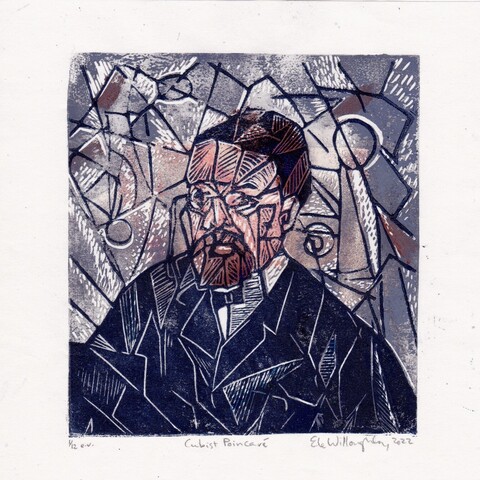For #SciArtSeptember day 17: abstract, my cubist inspired portrait of mathematician Henri Poincaré. This print is about how art movements in art can be connected with contemporary math and physics (and other sciences). Specifically, the way Cubism breaks from a single favoured perspective or absolute frame of reference & attempts to break down subjects into
1/n
geometrical shapes from multiple points of view can be tied to advancements in non-Euclidian geometry in mathematics and special relativity (published by Einstein in 1905) and the revolution in early 20th century physics. Picasso and his circle were specifically introduced to the mathematics of the fourth dimension and Non-Euclidian geometry by actuary friend Maurice Princet, who gave him the book 'Traité élémentaire de géométrie à quatre dimensions' (Elementary Treatise on the Geometry 4D) 2/n
by Jouffret, a popularization of Henri Poincaré's 'La Science et l'Hypothèse' (Science &
Hypothesis). Jouffret's book includes many diagrams of 4D objects like hypercubes projected on the 2D surface of a page. Princet also spoke to Picasso about the work of polymath Henri Poincaré. Picasso realized that this approach to 4D geometry captured the how he wanted to depict 2 points of view simultaneously & art historians can trace the influence of this geometry in his earliest Cubist paintings.3/4
So I have made a Cubist style portrait of mathematician, physicist, engineer and philosopher of science Henri Poincaré (1854-1912).
4/4

